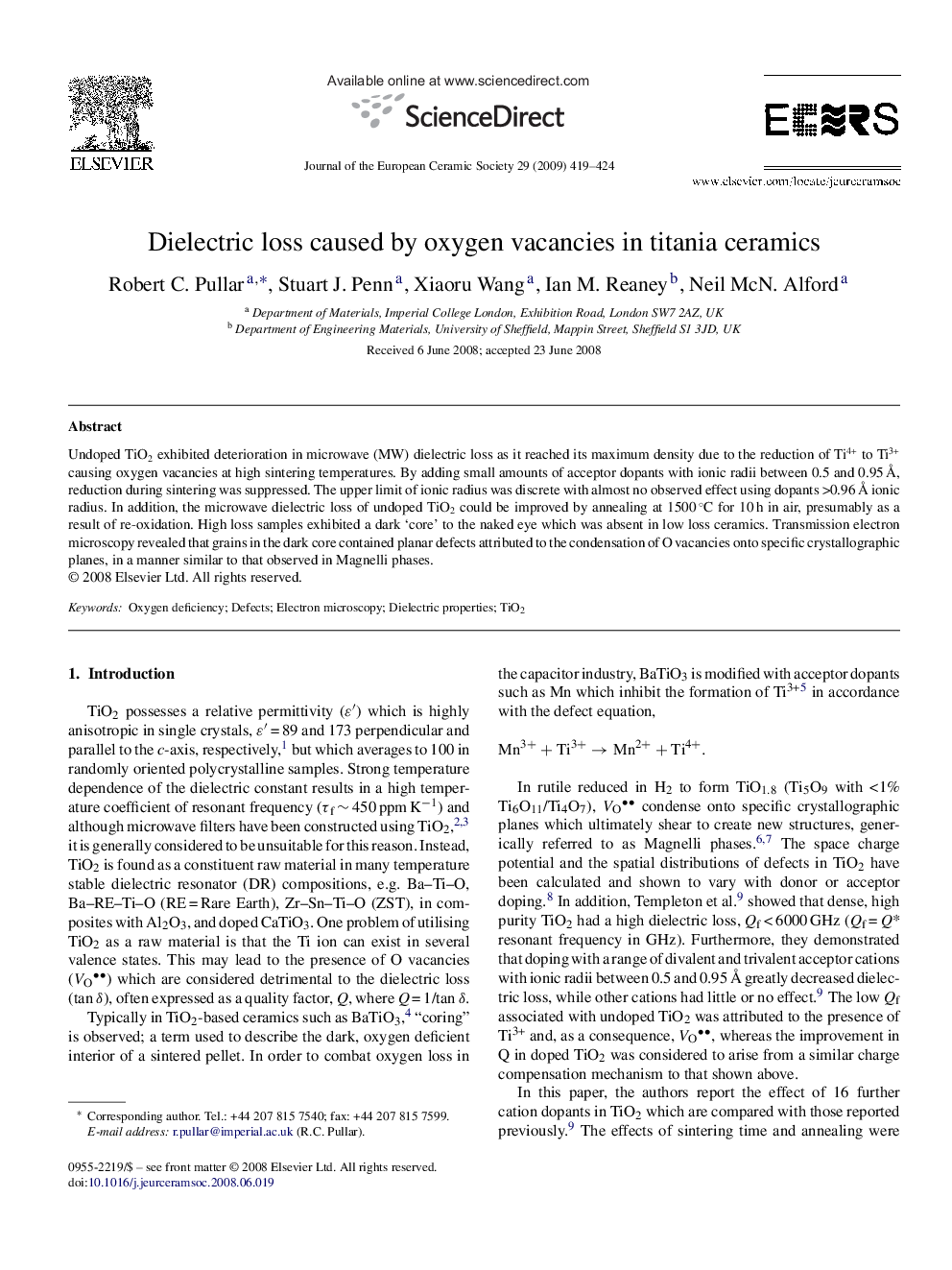| Article ID | Journal | Published Year | Pages | File Type |
|---|---|---|---|---|
| 1476342 | Journal of the European Ceramic Society | 2009 | 6 Pages |
Undoped TiO2 exhibited deterioration in microwave (MW) dielectric loss as it reached its maximum density due to the reduction of Ti4+ to Ti3+ causing oxygen vacancies at high sintering temperatures. By adding small amounts of acceptor dopants with ionic radii between 0.5 and 0.95 Å, reduction during sintering was suppressed. The upper limit of ionic radius was discrete with almost no observed effect using dopants >0.96 Å ionic radius. In addition, the microwave dielectric loss of undoped TiO2 could be improved by annealing at 1500 °C for 10 h in air, presumably as a result of re-oxidation. High loss samples exhibited a dark ‘core’ to the naked eye which was absent in low loss ceramics. Transmission electron microscopy revealed that grains in the dark core contained planar defects attributed to the condensation of O vacancies onto specific crystallographic planes, in a manner similar to that observed in Magnelli phases.
